Verena Heusser
Multi-Task Learning for Calorie Prediction on a Novel Large-Scale Recipe Dataset Enriched with Nutritional Information
Nov 02, 2020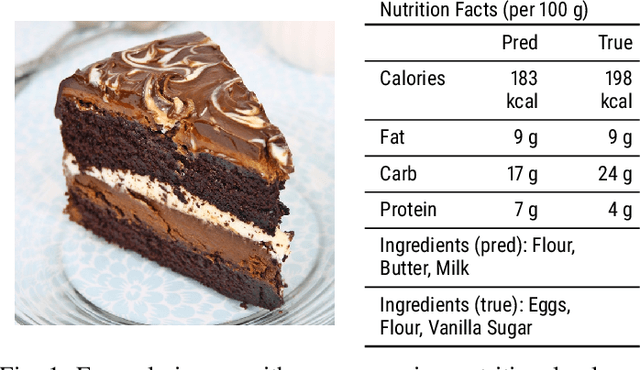
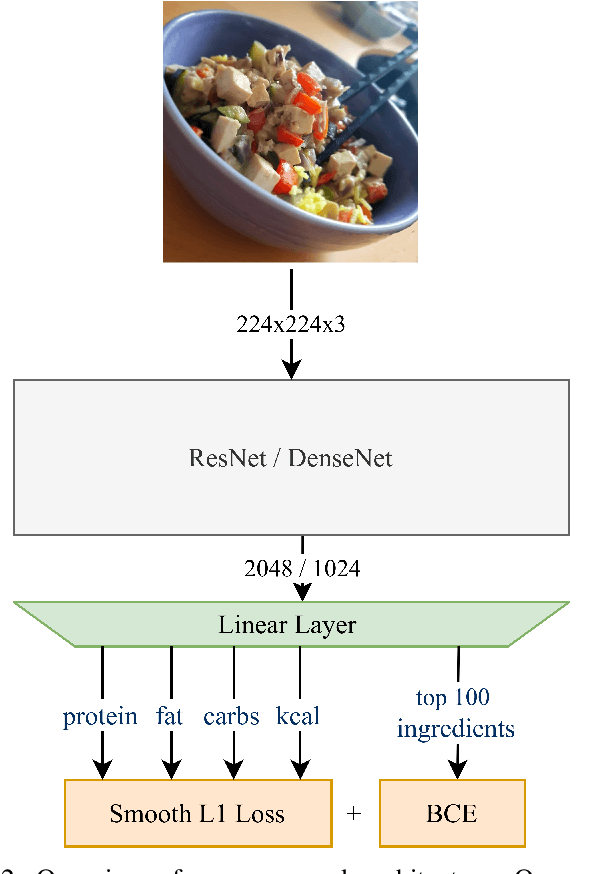
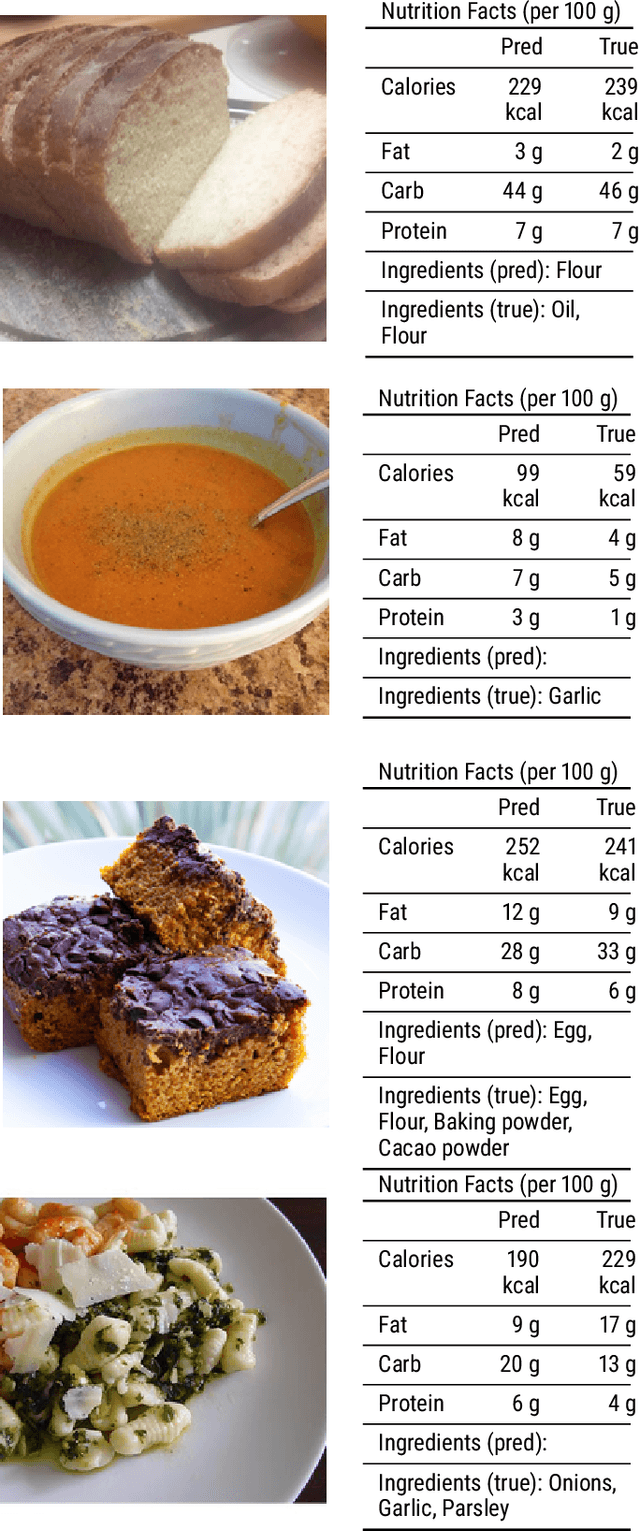
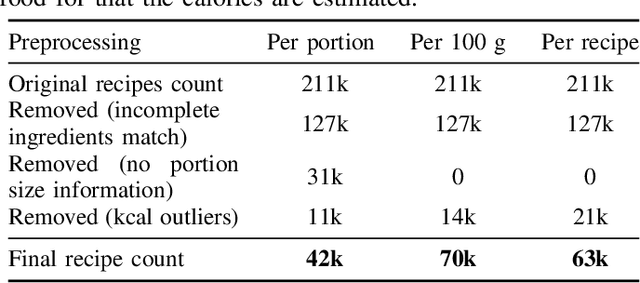
Abstract:A rapidly growing amount of content posted online, such as food recipes, opens doors to new exciting applications at the intersection of vision and language. In this work, we aim to estimate the calorie amount of a meal directly from an image by learning from recipes people have published on the Internet, thus skipping time-consuming manual data annotation. Since there are few large-scale publicly available datasets captured in unconstrained environments, we propose the pic2kcal benchmark comprising 308,000 images from over 70,000 recipes including photographs, ingredients and instructions. To obtain nutritional information of the ingredients and automatically determine the ground-truth calorie value, we match the items in the recipes with structured information from a food item database. We evaluate various neural networks for regression of the calorie quantity and extend them with the multi-task paradigm. Our learning procedure combines the calorie estimation with prediction of proteins, carbohydrates, and fat amounts as well as a multi-label ingredient classification. Our experiments demonstrate clear benefits of multi-task learning for calorie estimation, surpassing the single-task calorie regression by 9.9%. To encourage further research on this task, we make the code for generating the dataset and the models publicly available.
Bimodal Speech Emotion Recognition Using Pre-Trained Language Models
Nov 29, 2019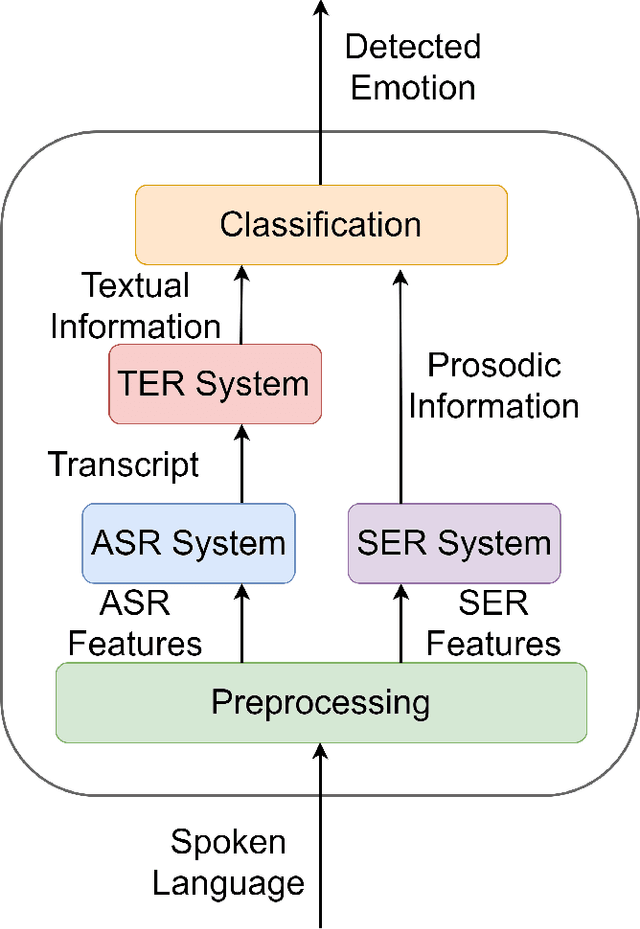
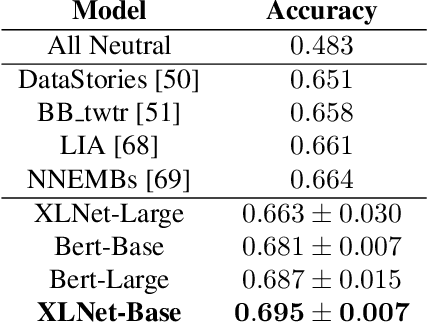
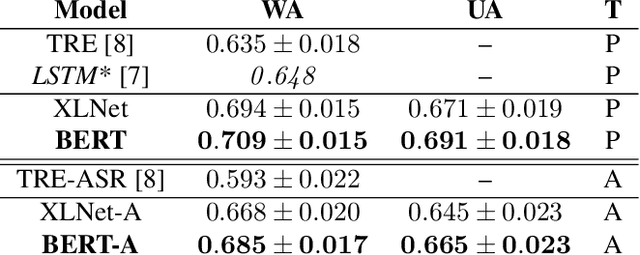

Abstract:Speech emotion recognition is a challenging task and an important step towards more natural human-machine interaction. We show that pre-trained language models can be fine-tuned for text emotion recognition, achieving an accuracy of 69.5% on Task 4A of SemEval 2017, improving upon the previous state of the art by over 3% absolute. We combine these language models with speech emotion recognition, achieving results of 73.5% accuracy when using provided transcriptions and speech data on a subset of four classes of the IEMOCAP dataset. The use of noise-induced transcriptions and speech data results in an accuracy of 71.4%. For our experiments, we created IEmoNet, a modular and adaptable bimodal framework for speech emotion recognition based on pre-trained language models. Lastly, we discuss the idea of using an emotional classifier as a reward for reinforcement learning as a step towards more successful and convenient human-machine interaction.
 Add to Chrome
Add to Chrome Add to Firefox
Add to Firefox Add to Edge
Add to Edge